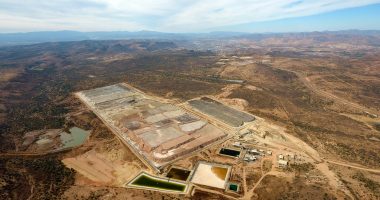By Jonathan Goodman and Matthew Goodman
In a May 5th, 2021 Bloomberg news article titled ‘Gold CEO Blasts ‘Hysterical’ Investors Chasing Quick Cash’ Barrick Gold Corp. CEO Mark Bristow was quoted as saying:
“Fund managers just bash the table and want money — they’re not interested in this industry reinforcing its foundations,” […] “Then they turn around and get hysterical when a host country demands returns.”
Imagine referring to the owners of a company – the shareholders – as “hysterical” and complaining that shareholders want “returns, returns, returns.” What would be the point of investing if it were not for returns? If we are going to talk about returns in the mining sector, perhaps it is time for some reflection and industry introspection on the reason for the so-called ‘hysteria.’
GOLD MINING PROJECTS HAVE PERFORMED WELL ON A PROJECT LEVEL AND REPRESENT AN ATTRACTIVE OPPORTUNITY FOR INVESTORS
In May 2006, amid a so-called “Commodities Supercycle” and a raging bull market for gold prices, the GDX ETF was launched. The GDX is a diversified exchange-traded portfolio comprised of the most prominent publicly-traded gold mining companies. From an investor perspective, it has been somewhat of a failure. Since its inception, the GDX has generated a dividend-adjusted total return of 10.5%, less than a 0.67% return per year for the last fifteen years. Over the same period, the gold price is up from $657.10 per Troy ounce to $1,830.70, representing a positive total return of 179%, or 7.08% per year. Operating margins have kept pace with the price of gold during this period, with total average weighted cash costs (excluding royalties) for gold miners increasing from $305/ounce to $650/ounce. However, we have seen executive compensation increase at a greater rate during this period. In summary, gold has gone up, gold miners’ margins have gone up, and executive compensation has gone up, yet gold stocks are flat. One would expect to achieve a superior rate of return; however, that has not been the case.
We understand that part of what Mr. Bristow is trying to say is that investors should take a longer-term view and allow gold companies the ability to strengthen their balance sheets – but when the industry has a fifteen-year legacy where gold has done well, and the equities have not, it should not come as a surprise to find fund managers asking about when they will see returns.
Something is not adding up for long-term investors in the gold mining sector. Investors buy gold stocks for exposure to the price of gold, but if the price of gold continues to perform well and the equities do not, gold stocks are at risk of becoming irrelevant. It is time we talk about investor returns and the paradigm shift required to move the industry forward, not only to keep investors engaged but also to entice generalist investors to come back.
Gold equities should outperform gold
Our view is that gold miners’ equities should outperform gold. As the gold price increases, the value of gold-producing equities should increase as they are levered to the gold price. Operational expenses and financial costs provide leverage. In theory, this should increase returns to ownership; from this standpoint, we believe that gold producers should be a premium investor product.
Gold mining projects have performed well on a project level and represent an attractive opportunity for investors. On a corporate level, it is a decidedly different story. Head office decisions involving how these companies have spent their cash flows have eroded their values significantly. We believe this is primarily due to the historical role of gold producers in the equity market and the capital allocation strategies that persist from a different era.
How did we get here?
Historically, gold equities had a more significant role in the equity markets. Before 1975, it was illegal for Americans to own physical gold. Americans that wanted exposure to gold had a limited selection of investable products. US investors sought gold mining companies as an investable proxy for gold. Gold equities had a near-monopoly on gold speculation and investment. In addition, most of the large gold producers at the time were from South Africa. By 1984, most institutional investors began boycotting South African stocks in protest of Apartheid. This meant that gold equities from North America and Australia were the only way to invest in gold equities. Due to the high demand, North American and Australian gold miners traded at substantial premiums to net asset value (NAV).
This was the golden age for mining executives. Very high share prices compared to the value of their underlying assets made acquisitions significantly accretive. Growth strategies served both the interests of management and the investor, spawning the growth narrative that persists within the industry today (despite the evidence on shareholder returns that this strategy is no longer working).
The premium to NAV allowed management teams to aggressively acquire new projects, growing the asset portfolio in an accretive manner. Under this scenario, the default capital allocation decision would be acquisition, as dividends or share buybacks were a highly inefficient use of capital. For management, this was ideal. Management is acting in the best interests of shareholders while simultaneously growing the asset portfolio they oversee. This expansion of the portfolio justifies greater executive compensation (the bigger the company, the bigger the pay). It insulates management from political and operational risk through asset diversification.
The share premium to NAV is long gone in today’s market. Most mining companies trade at a discount to NAV, and many junior producers trade at a deep discount. Investors have more options than ever to gain exposure to gold (physical metal, derivative product, ETF) without the regional, political, or operational risks inherent in a mining project. As such, the strategy of gold producers seeking growth through acquisition no longer benefits shareholders as it did in the past.
An accretive transaction is far more challenging when companies are trading at a significant discount to NAV. At a minimum, the spread between the acquirer and its target from a NAV perspective is substantially reduced, and execution is crucial. History suggests that reliance on execution is a mixed bag, as many projects do not live up to their hype. For an operating mining company, increasing the size of its mining asset portfolio does not do much for its share price. However, this has not changed the focus of many companies. Looking at the universe of gold mining equities today, you see a group of companies all prepared for growth. Large C-suites with extensive corporate development and investor relations groups are all primed to do significant and even transformational deals. In many cases, this is no longer in the best interests of the shareholders.
Dividends and share buybacks become much more critical for creating value for shareholders when there is significant cash generation and market valuations are at a substantial discount compared to the underlying value of a given company. The pushback we often receive from junior/intermediate producers is that “dividends/buybacks do not work.” Often what they mean is that dividends and buybacks do not make the stock go up. We disagree with that premise, especially in the near-zero interest rate world in which we find ourselves today. Allocating capital to shareholders acknowledges through action the importance of shareholder returns beyond share price appreciation.
A paradigm shift is needed
Paying dividends to shareholders is simply sharing your operating returns with the business owners. Dividends reward long-term holders and incentivize investors to remain investors. Dividend distributions reflect a return on NAV rather than market capitalization. If share buybacks are executed at a discount to NAV, that transaction is accretive to the non-tendering shareholders. Share buybacks are helpful as they provide liquidity to the market and help disgruntled investors exit an unwanted investment. Even if the share price does not adjust, investors now own a greater NAV/share. In addition, a substantial dividend or share buyback policy forces greater discipline on the management team as the cash flow available for acquisitions is restricted.
Many senior gold companies have already made the shift, with most now paying out between 15-40% of their free cash flow to shareholders. The intermediate and junior companies have not; most are not even paying a dividend, and those that do are paying out less than 10% of free cash flow. Senior producers trade at a 30-50% premium when compared to their intermediate and junior counterparts. While some of these differences in valuation could be credited to a liquidity discount, our view is that the primary factor in the valuation gap is the capital allocation strategy.
To be clear, we are not against acquisitions. We believe that genuinely strategic acquisitions will, more often than not, provide shareholders with an accretive opportunity. For example, consolidating a neighbouring property and capturing operational synergies by combining multiple deposits under a central mill. Similarly, unique and challenging deposits can require specific knowledge and understanding. Management teams can rightfully justify acquisitions that leverage their unique expertise. Acquisitions can be an excellent use of capital. However, they should not be made merely to solve a company’s valuation issue.
We believe that there needs to be a fundamental shift in the industry where the shareholder experience mirrors the ownership experience. Dividends and share buybacks need to become a part of virtually any company’s capital allocation strategy. Acquisitions need to be more strategic, and companies need to understand what they are good at and where they add value. Management teams need to understand that dividends will help a company grow and not impede it. In a zero-interest rate world where investors are clamouring for yield, a dividend payout can lower a company’s cost of capital.
One needs to look no further than what is arguably the most successful company in the gold mining business, Agnico Eagle. It trades at one of the highest valuations in the industry. It pays a significant dividend of between 30-40% of free cash flow. What is even more impressive is that they have delivered a cash dividend since 1983, while they have grown significantly over this period.
At Dundee Corporation, we feel that it is critical that management be properly aligned with the interests of shareholders, both as an investor and as an issuer ourselves. We invest in some exciting junior companies which trade at a significant discount to their underlying asset value. We intend to work with these companies and ensure that the cash flows made once production is achieved are shared with the shareholders of the business.
We believe the industry needs to evolve if it is going to re-engage with existing and prospective investors in a meaningful way. This includes boards and management teams reexamining their capital allocation strategies to improve the shareholder experience. We believe that Barrick Gold has the opportunity to be a leader in this regard. While we fully acknowledge the importance of balance sheet strength, to dismiss shareholders as “hysterical” for wanting returns does not entice investors.
If the mining industry is to thrive, build new projects, make new discoveries, and move forward, it needs to attract more capital from generalist investors. What attracts investors? Returns. More capital and investment demand coming into the industry is good for everyone. Presently, valuations are low, and gold prices are robust. There is no better time than the present to position the gold industry for great returns moving forward.
It is time to start treating the shareholders as if they own the company.
Written by Jonathan Goodman, President and CEO of Dundee Corporation, a Stockhouse Publishing client, and Matthew Goodman, Vice President and Portfolio Manager, Dundee Goodman Merchant Partners.





